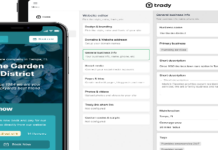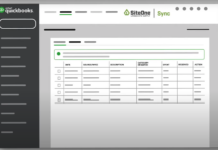Advance your business through computers
“If my best friend asked me, ‘What do I need to do to get into the lawn and landscape business?’ I would tell them that before you buy a truck, or a mower, or a spreader or anything else, to get yourself a computer, get the software and start building a marketing universe,” says Joe Kucik, president of Real Green Systems (www.realgreen.com).
Kucik travels the country to conduct seminars on his company’s software, as well as marketing techniques for the green industry, and he says the two go hand-in-hand. Real Green’s software handles not only tasks such as scheduling and billing, but also includes a sales and marketing component. “There’s ways to do targeted marketing, neighborhood by neighborhood, or just to existing customers. You can build a marketing universe by downloading tens of thousands of names into the system, and then build in pricing and program information,” says Kucik.
In his own lawn maintenance business and when advising others in the industry, Kucik promotes the concept of “one-step” sales, which means including pricing information when marketing to prospects. “We’re not trying to get them to call us to talk about price, we’re trying to sell them on the spot. It’s a quicker and more cost-effective process,” he explains. This functionality, and dozens of others sales and marketing tools, are built into the software, he adds.
 |
| Real Green recently introduced a hand-held unit that allows the crew out in the field to clock in and out on specific jobs, as well as track what they’ve done and what products they’ve used. The information is then downloaded to the office PC. Thanks to the unit’s GPS capability, managers back in the office can track where their trucks are all day. |
The names of prospects are added into the system, and they then enter into what Kucik calls “a circle of life,” as they become part of a marketing universe, and then hopefully an active customer. The software tracks all of the information in a single database, simply assigning each homeowner a different status as they become a customer, or add or delete a service, etc.
|
By driving through neighborhoods to survey individual properties, compile pricing information, take note trees on each property, etc., a marketing list goes from simply a name and phone number to a real prospect who can be contacted with pricing information, etc. “So many people do what I call ‘shotgun marketing,’” says Kucik. “They’ll do Yellow Pages, newspaper, radio, flyers, that type of thing, but we’ve found that not to be cost-effective. So, we try to get people to build a marketing universe and then market to people in that universe.”
The marketing doesn’t end once a homeowner becomes a customer, adds Kucik. “We try to upsell them on other services we offer, and continue to market to that group, because active customers are really the best group we have in our marketing universe. It’s easiest and more cost-effective to market to your current and past customers than to simply throw money out there with a general advertisement and hope some people call you.”
Kucik says many people he talks to are surprised to see the marketing component built into the software, in addition to scheduling/billing functionality. “It’s the marketing aspect that helps our customers grow their business.”
Of course, the other aspects of business management built into the software are also important. “We have all different sized companies using our software, from very large companies to brand-new start-ups. In my opinion, the software is just as important to the smaller, start-up company, because they don’t have the personnel to do business management for them, they depend on doing things themselves. So, anytime they’re working on scheduling and invoicing is time they’re not out making money or selling to new customers,” he says.
Real Green recently introduced hand-held technology that Kucik says has become an instant hit with customers. “People love that they can time in and out on specific jobs, track what they’ve done and what they’ve used, track where their trucks are all day using GPS. It’s really been a revolutionary technology that gives companies better control over job costing and productivity.” It’s also made record keeping more reliable by eliminating the need to remember and record handwritten notes, and keeps employees honest at the same time. The unit is connected to the computer back in the office to sync the data into the software. (Wireless plans can be used, as well, but the cost is greater.)
|
The vast majority of customers using the Real Green system are utilizing the desktop software version of the system, which they purchase outright. A Web-based version is available that can be attractive to larger companies with multiple locations that need to access the system. “We offer both systems, but I really believe the software is best for most companies,” says Kucik. “For companies with a single office, the PC-based version runs much faster, with less chance of losing data or the system going down.”
Real Green offers, and insists upon, providing on-site installation and training for all customers new to the software. This type of training is critical in making the best use of the software’s capabilities, and customers are amazed to see everything brought together in one package, he adds. “Many companies, even some large organizations, are using Microsoft Excel for certain things, QuickBooks for their billing, Contact Manager for their sales, Microsoft Access for scheduling. They’re using four or five different software packages to manage their business.” Getting frustrated every time one doesn’t communicate properly with the others, he adds. “You lose a lot of functionality by using disconnected systems.”
Glenn Zior, vice president of CLIP software (www.clip.com), says some lawn care companies aren’t using any software technology at all. “I see it all the time. Occasionally, I’ll come across a really big company that’s still using logbooks, and it just blows my mind,” Zior says.
With dozens or hundreds of customers, a company needs some type of management system, Zior says. “I see companies that operate with Post-It notes stuck all over the place. That leads to phone calls missed, and you have to do everything from memory. It just doesn’t work.” Once a company makes the decision to get computerized, a common first step is to begin using Microsoft Excel to track things or Outlook to schedule maintenance, says Zior.
The realization that the use of software can help their business is important, says Zior, but he argues that green industry-specific applications represent a far better option than general database or business software. “The reason most people buy it is to improve their organization,” says Zior. “Some people go in saying they really want to start tracking every detail, but most are just looking to get more organized. Hopefully, after they achieve that organization, they begin tracking, because that’s really the lifeblood of their business. Because you can be really organized and still lose money.”
CLIP’s software can help those in the green industry take better control of their businesses, says Zior. “A lot of people in this industry don’t have a business background,” he points out. “Oftentimes, guys start out really small and their business just sort of grows and grows, so they may not be sure of what types of things to track, and most of them also hate being stuck in the office. They’d rather be outside doing the work and making money.” He tries to convince them that planning, organizing and tracking will also help them make money.
Zior points out that business management software for the green industry differs from other applications, such as design software. “With design software, you may choose to use it on some jobs, but not on others. With this, we’re trying to get you to manage your entire business with it, and that often means changing the entire way you do business. And that requires a real commitment, but it’s a proven method that will work if you follow through with it.”
The program is graduated in the sense that those using CLIP don’t need to use every single feature the software offers. “We have customers who just use it for scheduling and to record when a job gets done, but they won’t use the features to track how long it took, to record travel time or employee hours. Usually, as people get more comfortable with it, they begin to track more things,” Zior says.
The company recently introduced CLIP2Go, which uses Windows Mobile technology and a hand-held unit to help streamline inputs. “That allows each crew out there to have a mini computer. It also lets the manager have access to about 90 percent of the database out in the field, so it’s quite powerful.” This has eliminated the need to make handwritten notes and records and then enter the information into the system later on. It also provides directions for crews to each property.
The unit also includes GPS capability, allowing companies to track the location of crews. “The technology is really starting to roll all into one system,” says Zior. “You can even send data back and forth via the wireless on your cell phone.” Or, you can enter data out in the field, such as new customer information, and sync it into the software once you’re back in the office. Zior says this area that will continue to see advances in coming years. “It’s all about making it quicker and easier for the guys to collect information out in the field.”
Do customers notice a difference with companies using this type of software and technology? “It gives customers confidence that you’re going to show up when you’re supposed to, that they won’t be getting handwritten bills and that you’re on top of things,” says Zior.
The increased professional image benefits the lawn and landscape contractor, as well, he adds. “People tend to question handwritten bills. On the other hand, they figure if a computer did it, it must be right.” CLIP has its own lawn maintenance firm, serving 225 customers a week, which is now completely paperless. “We use hand-held units, we scan contracts—all the paper goes in the trash,” says Zior.
CLIP works with QuickBooks through a direct interface, for those who would like to use that program for bookkeeping purposes. “We offer two products: one is stand-alone and the other interfaces with QuickBooks,” says Zior.
CLIP provides a printed manual, as well as a training CD and weekly online training classes, Web-inars and seminars around the country. The company will also provide on-site training, which is popular, especially among medium to larger companies during the off-season. “When you can sit down with someone, you can help them not only with the software, but also with a little bit of business management. The software is a tool, and we try to teach them how to use that tool most effectively in their company,” says Zior. Everything the company offers, including the software itself, is available in both English and Spanish.
“When CLIP was started more than 20 years ago, the battle was just to get people to buy a computer. So, nowadays, the battle is changing. Most people have a computer now and at least know the basics of computer use,” says Zior. Those who frequently use computers will pick up operation of the software very quickly, those who don’t will take a little longer, he says.
While CLIP and Real Green are among the oldest, most widely used business management systems in the green industry, there are a number of other manufacturers of software systems specifically designed to aid in the operation of lawn and landscape companies. A few of these include:
• The Service Solution (www.theservicesolution.com), a comprehensive package that includes features such as marketing, estimating, personalized proposals, routing, mapping, invoicing, reporting and accounts receivable management.
• Groundskeeper Pro (www.adkad.com), which includes not only scheduling, routing, billing and job estimating features, but also the ability to manage payroll and track business expenses. The company also offers a related software system called Blizzard Buster, designed specifically for use by companies offering plowing and snow removal services.
• Gopher Landscape Billing and Scheduling Software (www.gophersoftware.com) allows users to schedule jobs and automatically print invoices once those jobs have been completed.
• Lawn Pro (www.lawnprosoftware.com) is a job scheduling and management package that allows users the customize invoices, print reports and track expenses.
• Lawn Billing Software (www.lawnbilling.com) is an online program that can be set up to post invoices online for easy access by customers and e-mails customers to alert them the invoice is available. It will also automatically send thank-you e-mails to customers once invoices have been paid.
Patrick White is a freelance writer and editor who is always on the lookout for interesting and unusual stories. He can be reached at pwhitevt@aol.com











![[VIDEO] Dickies®: Discover Workwear That’s Anything But Uniform](https://turfmagazine.com/wp-content/uploads/2023/06/1647663814-4b1a2a7742790a9b1e97a3b963477850192e1d6a9dfba9b07214a77bae25d6e3-d-218x150.jpg)






























![[VIDEO] Dickies®: Discover Workwear That’s Anything But Uniform](https://turfmagazine.com/wp-content/uploads/2023/06/1647663814-4b1a2a7742790a9b1e97a3b963477850192e1d6a9dfba9b07214a77bae25d6e3-d-324x160.jpg)